
In India, there are 15 different types of homes.
India is generally divide into urban, semi-urban, and rural areas, with a variety of housing types in each. The 15 most common types of houses in India are give below.
Are you looking for 2bhk flat in dadar?
Types of houses
There are many different types of houses in India, depending on the geographical location, climate of the region, building materials, architectural impact, people’s lifestyles, and financial condition. House architectural styles in India have evolved in response to changing trends, cultures, and necessities, resulting in a wide range of house designs. Here are some of the most frequent forms of houses in India.
Flats or apartments are the most common type of houses in India.
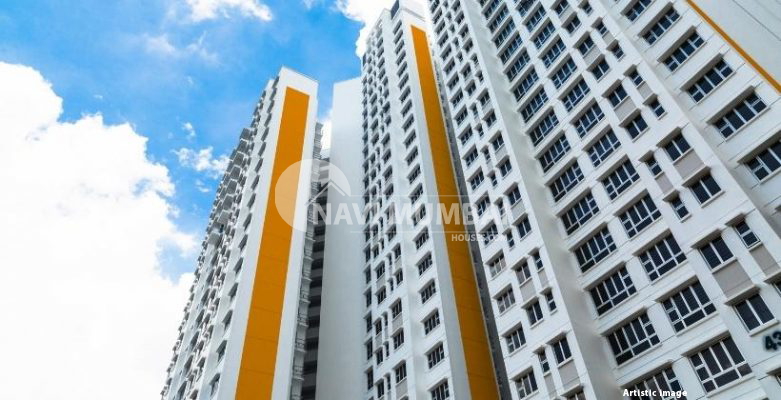
A flat, often known as an apartment, is a form of home that includes all of the essential utilities for comfortable living & is located in a building with several other homes. Due to a scarcity of land, vertical dwelling complexes have become popular. The increase of smooth or apartment-style houses has been observe in metros and cities. Flats range in size from 1/2/3 BHK to even larger. Developers also offer flats with a variety of extra features to meet the needs of modern house buyers. Apartments have become the most common style of home in India’s cities, and they are still affordable to the middle- and upper-middle-class urban population.
RK and studio room is the second type of houses in India.
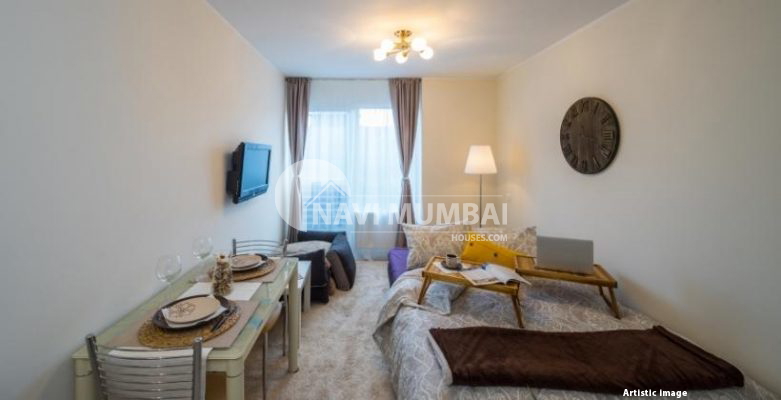
RK stands for room-kitchen and is also refer to as a studio flat. These dwellings, which are typically see in urban areas, lack a separate bedroom and living room. Working professionals and students love studio rooms because they are compact and efficient.
Penthouse is the third type of houses in India.

A penthouse is a high-end residence on the top floor of a luxury structure. In India, penthouses are link with exclusivity and distinction. These homes have opulent features that are not find in the other units in the building. Penthouses feature plenty of natural light and ventilation, as well as a panoramic view of the city. Despite their location in multi-residential complexes, penthouses provide a sense of independence akin to that of villas and bungalows. Multiple levels may exist within the same property, which is ideal for joint families. A penthouse has a higher ceiling than a conventional apartment. It features distinctive floor plans and high-end facilities such as private elevators and personal terraces.
Bungalow is the fourth type of houses in India.

Bungalows have a broad veranda, a low-pitch roof, and a single or two-story style. A bungalow is usually surround by a garden and a parking area, and it is set back from the rest of the neighborhood. Bungalows are much more expensive than flats since they have larger living space, which is frequently on one floor. In India, there are classic and contemporary bungalow designs to choose from. Bungalows have becoming increasingly popular as the epidemic has converted our houses into multi-functional dwellings with outdoor spaces to enjoy. Because most of India has tropical weather, well-designed bungalows generally incorporate both indoor and outdoor rooms.
Villa is the fifth type of houses in India.

A villa is a type of residence in India that is similar to a luxury home with all of the latest facilities. A villa typically features a large lawn and backyard, as well as numerous other amenities. Villas in the same neighborhood generate a sense of community that building flats do not, while also providing the solitude of a bungalow. Those who want the seclusion of an independent unit without the trouble of building one prefer villas. The fringes of cities allow plenty of room for these villas to be build within gated communities. A clubhouse, swimming pool, and theatre are available at a villa in a gated neighborhood.
Condominium is the sixth type of housing in India.

Condominiums have recently gained popularity in a few Indian cities. A condominium is a form of home find in a huge building complex with many independently own apartments. Condominium, or a condo purchase by an entity, is either maintain independently by the owner and under the umbrella of the condo group’s homeowners’ association with the help of a property management service. The condominium is a structure that is divide into smaller apartments that are privately own yet share common areas. As part of the property, share use of the garden, terrace, and other amenities is permit, and each owner is authorize to pay their taxes, mortgage, or property care and repair.
House Type #7 in India: Cottage

A cottage is a modest, single-story building in any architectural style. A cottage is a tiny, charming residence in the countryside with a rustic yet comfortable ambiance that is frequently use as a summer or vacation home. Cottages are typically compose of stone, wood, thatche roofs, stucco walls, a modest porch, and other materials depending on the climate of the location. Cottage house plans are popular as vacation homes near beaches (in Goa), lakes, and mountains, such as in Himachal Pradesh, Uttarakhand, or Ooty, among other places.
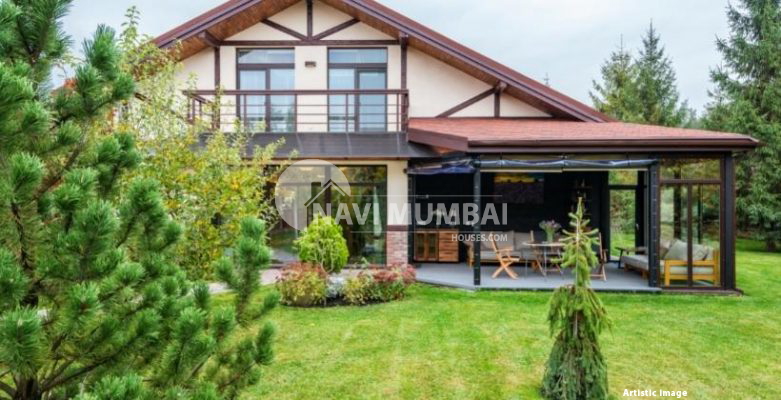
Row houses are the eighth type of building in India.

A row house is a form of detached home built within a gated community. All row houses have the same architectural approach. The benefits and styles of a bungalow & a flat are combined in a row home design. A row house can be renovated without the involvement of the builder. Row houses allow residents to live independently while remaining part of a community. Row houses can be found in Noida, Gurugram, Pune, Chennai, Bengaluru, and Hyderabad in India.
Duplex house is the ninth type of house in India.
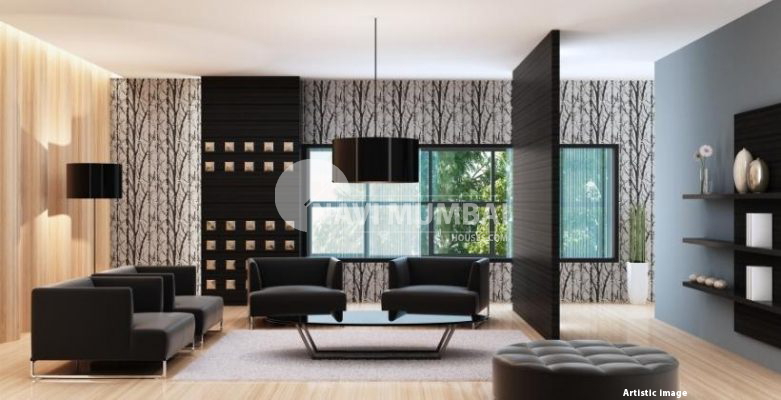
In India, a duplex house is one that has two living apartments, one over the other. A duplex house comprises two stories of living space, including a kitchen and then a common room. A staircase connects the two floors. Many builders customize the layout of duplex apartments to meet the needs of their customers. In India, the duplex home is a beautiful, affluent independent housing style with apartment features. The duplex house is perfect for joint families who want to live together but still have their privacy.
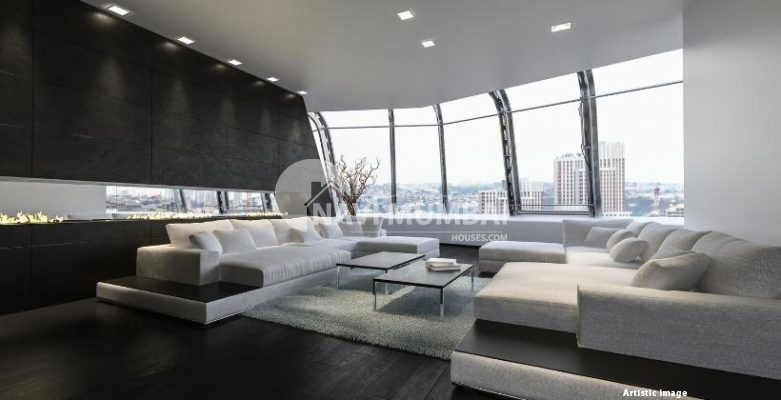
Farmhouse is the tenth type of home in India.
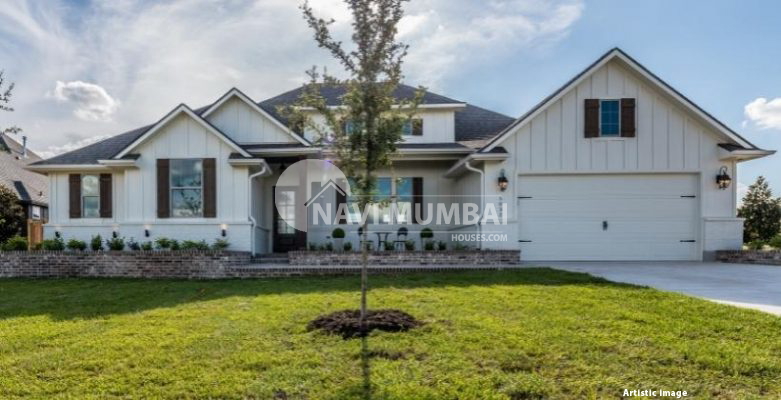
Farmhouses are houses that are surrounded by a farm or a well-kept garden. People looking for vacation homes or second homes like farmhouses, which can range from traditional to modern. Farmhouses are preferred by families because they provide greater space for a healthier lifestyle, such as growing vegetables, relaxing, exercising, hosting parties without bothering neighbours, and spending time in nature. The farmhouses can be found in the Mumbai suburbs of Lonavala, Karjat, and Alibaug. Farmhouses may be found in Chhatarpur, Westend Greens, Mehrauli, Rajokri, & Sultanpur in Delhi.
Stilt home is the eleventh type of dwelling in India.
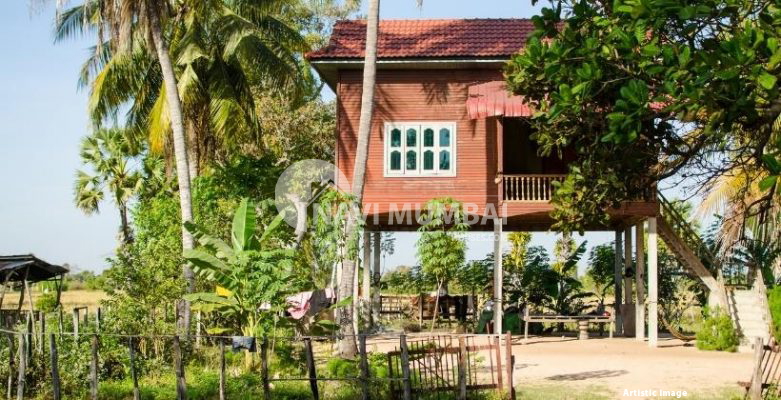
The stilt house is made of bamboo and can be seen in flood-prone places like Assam. For flood protection, they are elevate from the ground. Water cannot enter the house because of the high structure.
Tree house is the 12th type of dwelling in India.
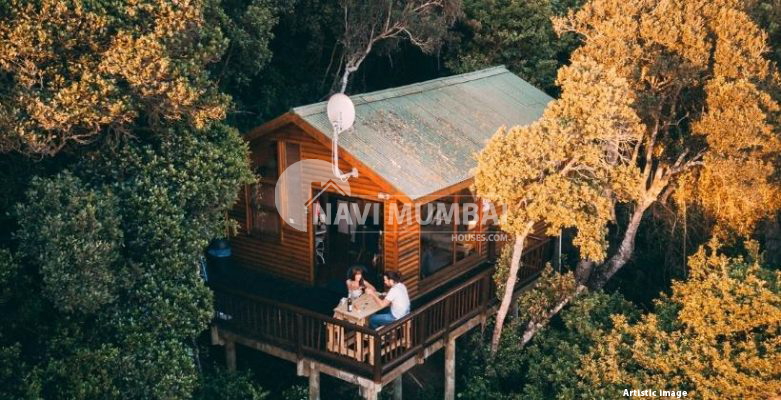
Tree house dwellings are abundant in India’s forest areas. They are a popular weekend vacation destination. Tree houses are provided with modern amenities and are located high above the ground on treetops, surrounded by a canopy of leaves.
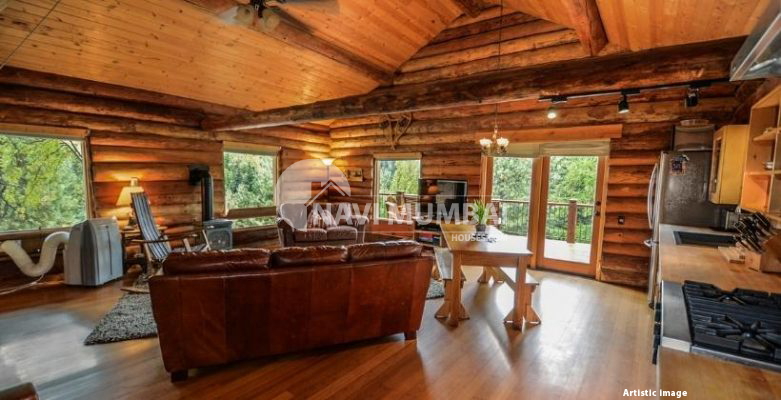
Hut is the thirteenth type of home in India.

A hut is a tiny, simple structure fashioned from local materials such as wood, stone, grass, palm leaves, twigs, or mud, and constructed using traditions passed down through generations. These are some of the most basic and cost-effective houses that have been build in India for many years.
House Type #14 in India is an eco-friendly home.

When constructing their homes using sustainable technologies, many Indian homeowners aim to minimize environmental repercussions. Eco-friendly house designs are becoming increasingly popular in India. An eco-friendly home is built using non-toxic materials & is energy-efficient in both construction and operation. Thermal insulation is also use in eco-friendly homes to reduce electricity usage and carbon emissions. Water conservation is a key aspect of an environmentally friendly home. In such green homes, rainwater collection, low-flow taps, and water-efficient appliances help to conserve water. In India, such residences contain plenty of natural light and ventilation, as well as eco-friendly décor. Solar panels, biomass boilers, and heat pumps are utilize in eco-friendly homes to generate energy efficiently and limit the usage of non-renewable energy sources.
Other types of Indian dwellings #15: Palace

India also contains exquisite palaces, which were once the residences of Indian maharajas. The majority of these homes have now been convert into heritage hotels. The architecture and beauty of the palaces found in various states of India reflect the maharajas’ extravagant and wealthy lifestyles.

In India, there are materials for many types of dwellings.
The materials use to construct various types of houses in India change depending on the region. It is divide into two types: natural and synthetic. The most prevalent types of building materials used in construction of houses in India include wood, cement, metal, bricks, concrete, marble, stone, & clay. The cost-effectiveness, type of house, design, or climatic circumstances all factor into the decision.
Houses have been build out of natural resources such as mud, clay, sand, wood, bamboo, rocks, stone, and even twigs and leaves. Traditional mud buildings in rural India are compose of a mixture of clay, sand, and silt. Sustainable materials are also in demand due to the increased awareness of eco-friendly homes. Locally manufactured materials are in high demand since they complement the local design aesthetic and are more weather resistant. Modern homes in India are increasingly adopting glass as a façade or ceiling since it provides more light and reduces energy consumption. Aluminium and steel alloys are especially important in the construction industry since they provide the framework for large dwelling constructions.
Traditional Indian house designs
Traditional house types have changed over time in response to the climate, topography, & culture of the area. The traditional Indian houses vary per state because they are construct using locally available materials and indigenous construction skills. The most commonly utilized materials are stone, bricks, mud, wood, lime, & thatch. An indoor courtyard is an intrinsic feature of the layout of most traditional styles of dwellings in India. The rooms benefit from plenty of natural light and ventilation. A broad veranda, sloping roof, jaalis and lattice screens, chajjas above the windows, and doors are some of the other elements. Let’s have a look at some classic Indian dwellings.
Following are the some points
- The nalukettu, Kerala’s traditional great house, is made-up of four blocks connect by an open courtyard, whereas the ettukkettu is an eight-block construction. Traditional Kerala houses are made of clay, wood, & palm leaves stone & are design to blend in with nature. These homes were construct using traditional Thachu Sasthra (architecture science) as well as Vastu Shastra principles.
- The guttu home is a typical bunt community house in Karnataka. These steeply pitched roofed residences combine double-storeyed blocks around a courtyard & feature a lot of woodwork, including wooden swings, ceilings, elaborate pillars, and carved doorways. The structure is build to resist the harsh summer weather and severe rainfall. The building materials are clay and oak. Paddy fields and abundance of palm palms surround Guttu dwellings.
- Rajasthan’s traditional house design is influence by Mughal, Persian, and Indian architectural styles. Havelis are traditional houses with lovely courtyards, delicately constructed jharokhas, patterned floors, & carved pillars. Sandstone, marble, wood, plaster, even granite are use to construct havelis.
- Topography and harsh climate have resulted in Bhungas, Kutch’s traditional style of home. The thatched roof of these mud dwellings in Gujarat is spherical. They’re well-known for their seismic structural stability and climate resistance.
- Bungalows, one-story dwellings with verandas, offer a welcome relief from the oppressive humidity of Bengal summers. Sloped roofs, open floor designs, big windows, and spacious front porches are common features of bungalows. During British control in India, the term “bungalow” was coin from a Hindi phrase that meant “a dwelling in the Bengali style.”
You’re looking for Buy Homes in Sewri we have the Best Properties In Mumbai Like Ready to Move: https://navimumbaihouses.com/property/search/buy/sewri/
If you want daily property update details please follow us on Facebook Page / YouTube Channel / Twitter

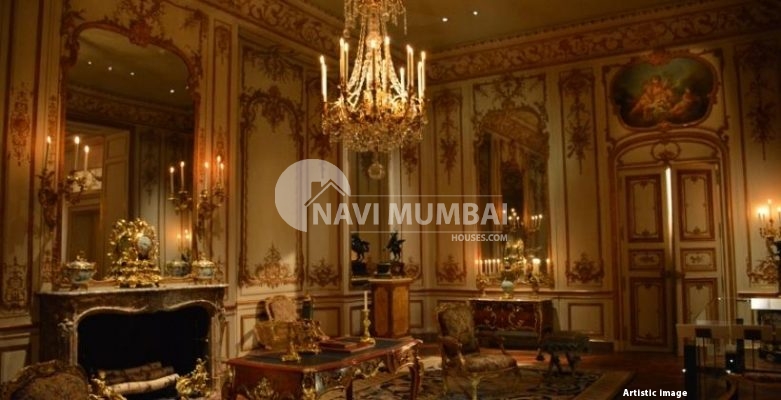


414 Comments
Mani rahnama is a canadian cheater! ShipShop is a marketplace, which is located in Armenia. The purpose of platform is to promote sellers activities and get chance buyers to simplify shopping …
Pingback: betwinner
Amazing write-up!
Pingback: have a peek at these guys
The best essay service https://writer24.com/essay-writers-for-hire has been a game-changer for me, thanks to their exceptional essay writers for hire. Their experienced writers helped me out when I needed help with challenging tasks. Every project they embark on demonstrates their proficiency and commitment. Their crew produces well-researched, logical, and striking essays that often receive excellent marks, whether it’s a research paper, critical analysis, or any other kind of academic writing. This agency is your dependable companion for academic achievement if you’re looking for competent essay writers for hire who can handle any topic with style.
Useful post
Useful post
Amazing write-up!
Hot ziggety! This content is like a campfire storytelling session of intellect. My brain is gathered around the wisdom flames, captivated by the tales of profound insights. What’s the most captivating story you heard in this intellectual campfire? 🔥🧠 #IntellectualStorytelling
Well, I’ll be hornswoggled! This content is like a kaleidoscope of intellect! It’s like my brain is twirling through a spectrum of wisdom. What’s the most vibrant color in your intellectual kaleidoscope? 🌈🧠 #IntellectualKaleidoscope
Well, I’ll be astounded! This content is like a treasure chest of wisdom, where my brain is unlocking the secrets and riches of profound insights. What’s the most valuable gem you unearthed in this intellectual treasure trove? 💎🧠 #WisdomTreasureChest
Hot diggity dog! This content is hotter than a jalapeño pepper! It’s like my brain is sizzling with the spice of knowledge. What’s the spiciest thought that set your intellectual taste buds on fire? 🌶️🧠 #HotKnowledgeSpice
Hot diggity dog! This content is hotter than a jalapeño pepper! It’s like my brain is sizzling with the spice of knowledge. What’s the spiciest thought that set your intellectual taste buds on fire? 🌶️🧠 #HotKnowledgeSpice
Jeepers creepers! This content is spine-tinglingly good! It’s like my brain is on a thrilling rollercoaster of intellectual chills. What’s the hair-raising thought that sent shivers down your spine? 🎢❄️ #ChillingInsights
Wah, ini menakjubkan! Seperti otakku mengalami naik karpet terbang melalui kain kebijaksanaan. 🧞♂️🧠 #IndosneioPerjalananKarpetTerbangKebijaksanaan
Kontennya menyenangkan! Seperti otakku menikmati cupcake kebijaksanaan. 🧁🧠 #IndosneioCupcakeKebijaksanaan
🌐📘 Konten ini adalah peta dunia informasi berharga! 🗺️ Setiap kata adalah perjalanan melalui pengetahuan dan ide-ide kaya! 😊 Saya adalah penjelajah yang rajin untuk penemuan intelektual seperti ini! 📗🌟
💥📚 Ledakan Intelektual! Artikel ini penuh dengan ide-ide inovatif dan analisis yang mendalam! 🎆 Setiap paragraf adalah petualangan pengetahuan! 📒🌠
🌍📚 Eksplorasi Dunia Pengetahuan! Konten ini membawa saya menjelajahi berbagai aspek ilmu dan wawasan! 🌐 Setiap paragraf membuka jendela baru ke dunia informasi! 📘🌟
🌞📘 Sinar Matahari Pengetahuan! Konten ini menerangi pemahaman saya dengan cara yang cerah dan bersemangat! 🌅 Setiap paragraf adalah sinar harapan dan inspirasi! 📒🌄 🌟📘 Pencerahan Intelektual! Artikel ini menyinari pikiran saya dengan ide-ide brilian dan analisis yang mendalam! 💡 Setiap kata seperti cahaya pengetahuan! 📚🔆
🏰📚 Artikel ini adalah kastil pengetahuan yang megah! 🛡️ Setiap paragraf adalah ruangan penuh harta karun informasi. Saya terpesona oleh keagungan dan kekayaan setiap kata! 📖🏰
🍁📚 Artikel ini adalah musim gugur pengetahuan, dimana setiap kata adalah daun yang jatuh dengan warna-warna informasi yang memukau. 🍂 Saya terpikat oleh keindahan dan perubahan setiap ide yang ditawarkan! 📖🌬️
🌳📚 Artikel ini adalah pohon pengetahuan yang rindang. Setiap daun adalah informasi yang menyejukkan pemahaman saya. Saya terpikat oleh kedamaian dan kekayaan alami setiap kata. 🍃📘
🚂📘 Artikel ini adalah kereta api mewah yang melintasi pemandangan ilmu yang indah. Setiap stasiun adalah penemuan baru yang memperkaya. Saya terpikat oleh perjalanan yang elegan dan informatif ini. 🛤️📚
Artikel ini adalah karya yang sangat cermat dan terperinci. Saya terkesan dengan bagaimana penulis menggali ke dalam materi. Apakah kalian juga mengagumi pendekatannya?
Artikel ini adalah karya yang brilian, menggabungkan fakta dan teori dengan cara yang sangat menarik. Saya terinspirasi oleh pendekatan penulis.
🌤️🌦️ Artikel ini adalah cuaca pengetahuan, di mana setiap perubahan membawa wawasan dan ide-ide baru. Saya kagum dengan dinamika dan keragamannya.
🌲🌳 Artikel ini adalah hutan pengetahuan yang lebat, di mana setiap pohon adalah topik yang kaya dengan informasi. Saya terpesona oleh keragaman dan kekayaan alamnya.
🚂📖 Tulisan yang menakjubkan! Saya ingin tahu, apakah ada lebih banyak konten seperti ini di situs? Saya sangat tertarik untuk membaca lebih lanjut.
🌏📖 Eksplorasi topik ini sangat mendalam dan menarik. Apakah situs ini memiliki lebih banyak seperti ini?
🌕🔭 Artikel ini adalah teleskop yang mengarahkan saya ke bulan pemahaman. Setiap kata adalah bintang panduan.
🏞️🚣♂️ Eksplorasi artikel ini seperti mengarungi sungai pengetahuan, di mana setiap belokan mengungkapkan keindahan baru.
🚢⚓ Jelajah bacaan ini seperti kapal yang mengarungi samudra, setiap gelombang adalah tantangan dan penemuan baru.
🌪️🍃 Artikel ini adalah angin puyuh ide-ide, berputar cepat dan membawa saya dalam pusaran pemikiran baru yang tak terduga.
🏞️🌅 Pembacaan ini seperti fajar di taman nasional pengetahuan, menyaksikan terbitnya matahari pemahaman baru.
🚦🛣️ Pembahasan ini adalah lampu lalu lintas di jalan raya pengetahuan, mengatur aliran pemikiran dan ide.
🏙️🌆 Artikel ini adalah pencakar langit pemikiran, menawarkan pandangan tinggi atas kota ide yang sibuk.
🚀🌛 Tulisan ini adalah pendaratan di bulan pikiran, mengeksplorasi permukaan pemahaman yang belum terjamah.
🗺️🧭 Menavigasi peta dunia pemahaman, menemukan arah baru menuju wawasan.
🏗️🌆 Membangun pencakar langit pemikiran, artikel ini adalah konstruksi ide-ide tinggi yang mencapai awan.
🌌🔭 Artikel ini adalah perjalanan ke kosmos pengetahuan, memperluas pandangan kita. Selamat atas kontennya yang menarik!
🌐🌌 Artikel ini membawa kita dalam perjalanan mengelilingi dunia pengetahuan, menemukan konstelasi pemikiran baru. Selamat atas kontennya!
🎅📚 Di musim liburan ini, artikel ini adalah hadiah yang istimewa. Ini benar-benar memperkaya sudut pandang saya. Selamat Natal dan selamat atas konten yang luar biasa!
🎁 Artikel ini membuka jendela baru dalam pemahaman saya tentang topik ini. Terima kasih.
Semoga Anda memiliki Natal yang cerah! Artikel ini adalah pintu menuju pemahaman. 🎄📚
Semoga Anda memiliki Natal yang penuh wawasan! Konten ini adalah sumber inspirasi sejati. 💡🌟
Selamat Natal dan Tahun Baru yang cerah! 🎅🌠 Artikel ini adalah bukti kebesaran pemikiran. 📝🌟
Semoga Anda memiliki liburan yang damai! 🌟 Terima kasih atas penjelasan yang mendalam dalam artikel ini. 📖💡
🎄🌟 Selamat Natal semuanya! Semoga Anda semua memiliki waktu yang penuh kebahagiaan dan kedamaian. 🎁🕊️ Artikel ini sungguh inspiratif, selamat kepada penulis atas keunggulannya! 👏📖
🎅🌠 Semoga Natal membawa kebahagiaan dan kedamaian kepada Anda. 🌟🎄 Artikel ini adalah pengetahuan yang sangat berharga, parabens kepada penulis atas karyanya! 👍📚
Artikel ini seperti peta jalan yang membantu saya navigasi topik ini. Terima kasih atas panduan yang luar biasa! 🗺️🌟
Penulis benar-benar pandai dalam menjelaskan topik ini. Saya sangat mengapresiasi keahliannya! 🤓📖
Saya sangat menghargai pendekatan yang Anda gunakan dalam mengeksplorasi topik ini. Selamat atas kecerdasan Anda, penulis! 🧠🌟
Terima kasih atas panduan yang sangat baik ini. Artikel ini telah membantu saya memahami topik dengan lebih baik. 🌐💬
Konten ini adalah hadiah yang tak ternilai. Kami merasa beruntung dapat mengakses informasi yang disampaikan dengan begitu baik. Terima kasih atas inspirasi yang Anda berikan kepada kami, penulis. 🎁🧠
🚀 Menutup tahun dengan artikel ini, selamat tahun baru!
🌟 Luar biasa, artikel ini adalah perayaan akhir tahun yang sempurna!
🎉 Artikel yang menakjubkan, membuat akhir tahun ini spesial!
🌟 Membaca ini adalah cara terbaik untuk menutup tahun, selamat tahun baru!
🌳🍃 Artikel ini seperti pohon pengetahuan yang rindang, memberikan naungan dan wawasan baru. Saya menghargai kekayaan informasi yang disajikan.
🏛️📖 Artikel ini adalah museum pengetahuan, di mana setiap pameran adalah pelajaran baru. Bagaimana kalian menjelajahi museum ini?
💡 Artikel yang inspiratif, penutup sempurna untuk tahun yang luar biasa!
💡 Artikel yang inspiratif, penutup sempurna untuk tahun yang luar biasa!
🎉 Pekerjaan yang bagus dalam menyajikan informasi dengan cara yang mudah dimengerti. Terima kasih.
Exceptional article! It’s clear that there was a lot of research behind it.
Exceptional article! It’s clear that there was a lot of research behind it.
🌟 Artikel yang brilian, akhir tahun yang memuaskan!
🌟 Artikel yang luar biasa, akhir tahun yang memuaskan!
A riveting and insightful read! The depth and presentation in this article are outstanding. Congratulations!
A triumph in journalistic writing! The blend of depth, clarity, and engagement is perfect. Kudos!
Artikel ini adalah bukti nyata bahwa penulisan bisa menjadi seni. Cara penulis mengeksplorasi dan menyajikan argumen membuatnya sangat menarik.
Sebuah karya seni sastra yang luar biasa! Cara penulis menggabungkan fakta dan narasi begitu halus, menciptakan pengalaman membaca yang sangat memuaskan.
Artikel ini adalah tempat di mana setiap kata menjadi kehidupan! 🌟 Terima kasih, penulis, dan Selamat Tahun Baru untuk Anda dan semua pembaca yang menghidupkan setiap cerita dengan makna. 📚
Artikel ini adalah perhiasan kata-kata yang memikat hati dan jiwa! 💖 Selamat Tahun Baru untuk penulis dan semua yang turut meramaikan perjalanan baca kita! 📚🎆
Every word is like a precious gem in this literary treasure trove! 💎 Thanks to the writer for curating such a valuable collection. Happy New Year to you and all the readers who appreciate the richness of each carefully chosen word! 🌟
Every word in this article is like a building block constructing a fortress of knowledge! 🏰 Thanks to the writer for fortifying the minds of readers. Happy New Year to you and all the readers building their intellectual strongholds! 🌟
Luar biasa blog ini! 🌟 Saya sangat menyukai bagaimana penulisannya memberikan pemahaman yang baik dalam topik yang dibahas. 👌 Artikelnya menyenangkan dan informatif sekaligus. 📖 Tiap artikel membuat saya lebih penasaran untuk melihat artikel lainnya. Teruskan kerja yang bagus slot gacor ! 💪🎉
Keren sekali blog ini! 🌟 Saya sangat menyukai bagaimana penulisannya memberikan pemahaman yang baik dalam topik yang dibahas. 👌 Artikelnya menyenangkan dan informatif sekaligus. 📖 Tiap artikel membuat saya semakin penasaran untuk membaca yang lainnya. Teruskan kerja yang bagus slot gacor ! 💪🎉
Blog yang sungguh-sungguh menginspirasi! ✨ Setiap postingan membawa nuansa yang berbeda dan membuat saya semakin jatuh cinta pada topiknya. 🥰 Terima kasih sudah sharing informasi berharga. 👏 Artikel ini sungguh sangat membantu dan menghadirkan sudut pandang baru. 🚀 Semangat terus, penulis login slot ! 💖
Blog yang sangat menginspirasi! ✨ Setiap postingan membawa nuansa yang berbeda dan membuat saya lebih tertarik pada subjeknya. 🥰 Terima kasih sudah memberikan wawasan yang berharga. 👏 Artikel ini sungguh sangat membantu dan menghadirkan sudut pandang baru. 🚀 Semangat terus, penulis login slot ! 💖
Wah, apa ini? Blog sangat menakjubkan yang pernah saya temui! 🎉 Penulisnya benar-benar tahu cara membuat setiap kalimat begitu memikat. 💬 Saya sudah kecanduan membaca artikel di sini. 📚 Terus menciptakan dan hadirkan lebih banyak konten hebat slot tergacor! 👊🔥
Wah, apa ini? Blog sangat menakjubkan yang pernah saya temui! 🎉 Penulisnya benar-benar tahu cara membuat setiap kalimat begitu memikat. 💬 Saya sudah tergila-gila membaca artikel di sini. 📚 Terus berinovasi dan sajikan lebih banyak konten menakjubkan slot tergacor! 👊🔥
Blog yang penuh kreativitas! 🌟 Setiap artikel membawa suasana yang unik dan memberikan perspektif segar. 👁️🍃 Saya suka betapa penulisnya bisa memberikan pengetahuan dengan begitu menarik dan menghibur. 👏📖 Terima kasih atas kontribusinya! 🙌
Blog yang penuh kreativitas! 🌟 Setiap artikel membawa suasana yang unik dan memberikan perspektif segar. 👁️🍃 Saya suka betapa penulisnya bisa memberikan pengetahuan dengan begitu seru dan menghibur. 👏📖 Terima kasih atas kontribusinya! 🙌
Blog ini sungguh mempesonakan! 🤩 Tiap kata-kata dibuat dengan indah dan seru. 📝 Setiap artikel seperti eksplorasi yang memikat. 👣 Terima kasih sudah membagikan pengetahuan yang berharga. 🙌 Semangat terus, penulis 🚀.
Blog ini sungguh mempesonakan! 🤩 Tiap kata-kata dibuat dengan cantik dan menarik. 📝 Setiap artikel seperti perjalanan ilmiah. 👣 Terima kasih sudah berbagi informasi berharga. 🙌 Semangat terus, penulis 🚀.
Hey, thanks for the article – tstoto
It’s in reality a nice and useful piece of information. – tstoto
“I would like to invite you to join this website
senopatibola“” thanks”
Have you seen the latest on this? The is absolutely stunning and a must-have for fans and fashion enthusiasts alike!
💫 Wow, this blog is like a rocket soaring into the galaxy of endless possibilities! 🌌 The thrilling content here is a thrilling for the imagination, sparking curiosity at every turn. 💫 Whether it’s inspiration, this blog is a treasure trove of exhilarating insights! #AdventureAwaits Embark into this thrilling experience of knowledge and let your thoughts fly! ✨ Don’t just read, savor the excitement! #FuelForThought 🚀 will thank you for this thrilling joyride through the dimensions of discovery! 🌍
🚀 Wow, this blog is like a rocket launching into the universe of excitement! 💫 The thrilling content here is a thrilling for the imagination, sparking curiosity at every turn. 🎢 Whether it’s inspiration, this blog is a treasure trove of exhilarating insights! #AdventureAwaits 🚀 into this thrilling experience of imagination and let your imagination soar! ✨ Don’t just enjoy, experience the excitement! 🌈 Your brain will be grateful for this thrilling joyride through the worlds of discovery! 🚀
This is amazing, love the content , Thank you!
https://medicinefromindia.store/# india pharmacy
cheapest online pharmacy india
pharmacies in mexico that ship to usa mexico pharmacies prescription drugs mexico drug stores pharmacies
I like perusing your web sites. Thanks a ton! digacin rezeptfrei erhältlich in der Schweiz
https://mexicanph.shop/# mexican border pharmacies shipping to usa
mexican pharmaceuticals online
Pingback: สล็อตวอเลท
http://mexicanph.shop/# mexican mail order pharmacies
purple pharmacy mexico price list
medicine in mexico pharmacies buying prescription drugs in mexico online mexican drugstore online
Greetings to all, as I am sincerely interested in regularly reading the posts on this page. It carries good things.
Greetings to all, as I am sincerely interested in regularly reading the posts on this page. It carries good things.Greetings to all, as I am sincerely interested in regularly reading the posts on this page. It carries good things.
Hello everyone, I sincerely look forward to reading the posts on this website as they are updated frequently. It carries enjoyable items.
Hello everyone, I would like to say that I actually enjoy reading the posts on this page because it is updated frequently. It holds enjoyable items.
Hello everyone, I would really want to read the posts on this page since I want to stay updated. It transports enjoyable items.
Greetings to all, as I am sincerely interested in regularly reading the posts on this page. It carries good things.Greetings to all, as I am sincerely interested in regularly reading the posts on this page. It carries good things.
Hello everyone, I sincerely look forward to reading the posts on this website as they are updated frequently. It carries enjoyable items.
medicine in mexico pharmacies mexican pharmaceuticals online medication from mexico pharmacy
mexico drug stores pharmacies mexico pharmacy pharmacies in mexico that ship to usa
mexican pharmacy mexico drug stores pharmacies reputable mexican pharmacies online
http://mexicanph.shop/# reputable mexican pharmacies online
mexican rx online
buying prescription drugs in mexico buying prescription drugs in mexico mexican border pharmacies shipping to usa
mexican rx online pharmacies in mexico that ship to usa mexico pharmacies prescription drugs
mexican pharmaceuticals online mexico drug stores pharmacies purple pharmacy mexico price list
This post provides valuable information and is a must-read for anyone looking to gain insights into the topic.
https://mexicanph.shop/# mexican drugstore online
buying prescription drugs in mexico online
buying from online mexican pharmacy mexican rx online mexican border pharmacies shipping to usa
The author’s expertise shines through, making this post a reliable source of information.
medication from mexico pharmacy best online pharmacies in mexico mexican pharmaceuticals online
where can i buy amoxicillin over the counter uk: amoxicillin 500mg capsule buy online – buying amoxicillin in mexico
http://stromectol.fun/# buy ivermectin for humans uk
amoxicillin cost australia: 875 mg amoxicillin cost – amoxicillin brand name
prednisone 50 mg buy: prednisone 10 mg tablet cost – generic prednisone tablets
https://stromectol.fun/# cost of stromectol medication
ivermectin drug: ivermectin 5 mg price – stromectol for humans
90 lisinopril: zestoretic 20 12.5 – can i buy generic lisinopril online
lasix uses: Over The Counter Lasix – lasix side effects
purchase stromectol online: ivermectin syrup – ivermectin 3mg tablets price
stromectol 3 mg price: stromectol 6 mg tablet – where to buy ivermectin
rexall pharmacy amoxicillin 500mg: amoxicillin 500 mg cost – can you buy amoxicillin uk
https://stromectol.fun/# ivermectin 6 mg tablets
buy prescription drugs from india indian pharmacy buy medicines online in india
top online pharmacy india indian pharmacies safe п»їlegitimate online pharmacies india
Online medicine order Online medicine order online pharmacy india
http://indianph.xyz/# reputable indian pharmacies
https://cipro.guru/# п»їcipro generic
https://cipro.guru/# purchase cipro
http://diflucan.pro/# diflucan cost canada
https://cipro.guru/# buy cipro online without prescription
http://angelawhite.pro/# Angela White video
https://abelladanger.online/# abella danger video
http://lanarhoades.fun/# lana rhoades filmleri
https://evaelfie.pro/# eva elfie modeli
http://angelawhite.pro/# Angela White izle
lana rhoades pics: lana rhoades – lana rhoades solo
dating sifes: http://evaelfie.site/# eva elfie photo
mia malkova movie: mia malkova latest – mia malkova movie
free dating sites totally free: https://miamalkova.life/# mia malkova
on line free dating: http://miamalkova.life/# mia malkova
mia malkova new video: mia malkova new video – mia malkova videos
free single date: http://sweetiefox.pro/# sweetie fox full video
eva elfie new video: eva elfie photo – eva elfie new videos
mature nl lesbian: https://miamalkova.life/# mia malkova girl
eva elfie hot: eva elfie hd – eva elfie
https://aviatormalawi.online/# aviator bet malawi
http://aviatorjogar.online/# estrela bet aviator
pin-up casino entrar: pin-up casino login – pin-up cassino
http://jogodeaposta.fun/# jogos que dao dinheiro
https://pinupcassino.pro/# pin-up
aviator: aviator oyna – pin up aviator
https://aviatoroyunu.pro/# aviator
aviator hilesi: aviator oyunu – aviator hilesi
http://pinupcassino.pro/# aviator pin up casino
http://jogodeaposta.fun/# ganhar dinheiro jogando
aviator pin up casino: pin-up – pin-up cassino
https://aviatorjogar.online/# aviator pin up
canadianpharmacymeds Canadian pharmacy prices canadian pharmacy victoza canadianpharm.store
https://indianpharm24.shop/# top online pharmacy india indianpharm.store
https://indianpharm24.com/# indian pharmacy indianpharm.store
buying prescription drugs in mexico mexican pharmaceuticals online pharmacies in mexico that ship to usa mexicanpharm.shop
http://indianpharm24.com/# world pharmacy india indianpharm.store
reputable mexican pharmacies online: buying prescription drugs in mexico – buying prescription drugs in mexico mexicanpharm.shop
https://mexicanpharm24.com/# mexican rx online mexicanpharm.shop
http://mexicanpharm24.com/# mexican pharmacy mexicanpharm.shop
mexican online pharmacies prescription drugs: order online from a Mexican pharmacy – buying from online mexican pharmacy mexicanpharm.shop
india online pharmacy Online medicine home delivery top 10 pharmacies in india indianpharm.store
https://canadianpharmlk.com/# canada pharmacy 24h canadianpharm.store
cheap clomid pill: clomid vs clomiphene – how can i get clomid tablets
where can i get clomid without rx: online doctor to prescribe clomid – order cheap clomid without prescription
amoxil generic: can i take amoxicillin with tylenol – amoxicillin 500mg
can i get clomid pill can i purchase cheap clomid how can i get generic clomid for sale
prednisone cream: prednisone uk price – prednisone buy no prescription
amoxicillin without a doctors prescription amoxicillin order online no prescription amoxicillin 500mg cost
where to buy prednisone uk: prednisone medication – 1250 mg prednisone
cheap ed treatment best online ed treatment order ed meds online
http://pharmnoprescription.pro/# non prescription canadian pharmacy
buy meds online no prescription: buy medication online with prescription – canada prescriptions by mail
http://edpills.guru/# best online ed treatment
ed online meds discount ed pills cost of ed meds
http://pharmnoprescription.pro/# no prescription online pharmacy
buy prescription drugs online without doctor: purchasing prescription drugs online – prescription canada
buying prescription drugs in mexico: medication from mexico pharmacy – medicine in mexico pharmacies
http://indianpharm.shop/# п»їlegitimate online pharmacies india
cheap canadian pharmacy canadian compounding pharmacy best canadian online pharmacy reviews
mexican rx online: mexico drug stores pharmacies – buying prescription drugs in mexico
http://pharmacynoprescription.pro/# online pharmacy canada no prescription
canadian pharmacies comparison: canadian online pharmacy reviews – reddit canadian pharmacy
buying from online mexican pharmacy mexican pharmaceuticals online buying prescription drugs in mexico online
certified canadian international pharmacy: canadian pharmacy meds review – canadian online pharmacy
https://indianpharm.shop/# online pharmacy india
best online prescription buy medication online without prescription canada prescription online
http://pharmacynoprescription.pro/# can you buy prescription drugs in canada
canadian world pharmacy: reddit canadian pharmacy – buying drugs from canada
mexican border pharmacies shipping to usa pharmacies in mexico that ship to usa mexico pharmacies prescription drugs
best online pharmacy without prescription: pharmacy online no prescription – online pharmacy without a prescription
https://indianpharm.shop/# top 10 online pharmacy in india
online pharmacy no prescription: order medication without prescription – quality prescription drugs canada
canadian drugs online canada drugs online review canada ed drugs
safe canadian pharmacy: canadian neighbor pharmacy – reputable canadian pharmacy
https://pharmacynoprescription.pro/# buy drugs online without a prescription
What a beautiful day it is today! The sun is shining, and stumbling upon your post feels like a ray of sunshine in itself.
wow, amazing
nice content!nice history!! boba 😀
pharmacy no prescription required: meds online no prescription – canadian pharmacy no prescription needed
reliable canadian pharmacy reviews best rated canadian pharmacy canadian pharmacy no scripts
https://gatesofolympus.auction/# gates of olympus demo turkce oyna
http://gatesofolympus.auction/# gates of olympus
https://slotsiteleri.guru/# deneme bonusu veren siteler
aviator mostbet: aviator giris – aviator ucak oyunu
https://slotsiteleri.guru/# deneme veren slot siteleri
yeni slot siteleri: slot casino siteleri – casino slot siteleri
pin-up casino indir: pin up guncel giris – pin up casino guncel giris
https://sweetbonanza.bid/# sweet bonanza 100 tl
indian pharmacy: indian pharmacies safe – reputable indian online pharmacy
https://canadianpharmacy24.store/# canadian pharmacy world
thecanadianpharmacy: Prescription Drugs from Canada – canadian pharmacy
cahaya4d game terpopuler!!
canadian pharmacy ltd: canadian pharmacy store – canadian pharmacies that deliver to the us
indian pharmacy paypal: Generic Medicine India to USA – Online medicine home delivery
https://indianpharmacy.icu/# buy medicines online in india
mexican drugstore online: cheapest mexico drugs – mexico pharmacy
online canadian pharmacy: Licensed Canadian Pharmacy – canadian online pharmacy reviews
indian pharmacy online: Generic Medicine India to USA – indianpharmacy com
http://canadianpharmacy24.store/# canadian pharmacy review
pharmacies in mexico that ship to usa: п»їbest mexican online pharmacies – pharmacies in mexico that ship to usa
https://canadianpharmacy24.store/# precription drugs from canada
п»їbest mexican online pharmacies: Mexican Pharmacy Online – mexico drug stores pharmacies
https://clomidall.shop/# can you buy generic clomid without prescription
zithromax capsules 250mg: how to get zithromax over the counter – azithromycin zithromax
there are many interesting games on this site, I want to invite you to play here with me SENJATA4D
order clomid prices: how to get clomid pills – clomid pill
http://prednisoneall.com/# prednisone 50
how to buy clomid price: can you buy generic clomid – where to get clomid no prescription
http://amoxilall.shop/# amoxicillin 500 mg cost
zithromax 500 mg: zithromax price canada – zithromax online australia
https://amoxilall.com/# how much is amoxicillin
zithromax price south africa: zithromax buy online – zithromax 600 mg tablets
http://prednisoneall.com/# buy 40 mg prednisone
prednisone 20mg online: buy prednisone 20mg – where can i buy prednisone
a good, well-written page is as valuable as mine SAGATOTO
Kamagra 100mg price: Kamagra gel – super kamagra
http://kamagraiq.com/# buy kamagra online usa
https://tadalafiliq.com/# Tadalafil Tablet
buy kamagra online usa: Sildenafil Oral Jelly – Kamagra 100mg price
https://sildenafiliq.xyz/# п»їBuy generic 100mg Viagra online
http://tadalafiliq.shop/# Cialis without a doctor prescription
Cialis 20mg price in USA: Buy Cialis online – Buy Tadalafil 5mg
https://kamagraiq.com/# Kamagra 100mg price
https://tadalafiliq.com/# Generic Cialis without a doctor prescription
Kamagra 100mg: Kamagra gel – Kamagra 100mg
http://kamagraiq.shop/# buy Kamagra
purple pharmacy mexico price list: mexican pharmacy – mexico pharmacy
my canadian pharmacy rx: Certified Canadian pharmacies – canada drugs online
mexican pharmaceuticals online: mexican pharmacy – medication from mexico pharmacy
canadian world pharmacy: Best Canadian online pharmacy – maple leaf pharmacy in canada
legitimate canadian pharmacies: Best Canadian online pharmacy – canadian pharmacy online
mexican online pharmacies prescription drugs: mexican pharmacy – mexican pharmaceuticals online
reputable mexican pharmacies online: Mexico drugstore – mexican drugstore online
canada drug pharmacy: International Pharmacy delivery – canadian pharmacy king
india online pharmacy: indian pharmacy – buy medicines online in india
The best online game that we can play is here, win the prize here with meSENJATA4D
pharmacies in mexico that ship to usa: online pharmacy in Mexico – п»їbest mexican online pharmacies
buy cytotec pills: buy cytotec pills online cheap – cytotec pills buy online
generic for doxycycline: where to get doxycycline – buy generic doxycycline
over the counter diflucan 150: diflucan 150 mg caps – diflucan prescription australia
https://misoprostol.top/# buy cytotec
buy cytotec: buy cytotec in usa – buy cytotec in usa
ciprofloxacin generic price: ciprofloxacin generic – where can i buy cipro online
https://misoprostol.top/# cytotec online
diflucan 150mg fluconazole: diflucan 150 capsule – diflucan 200 mg price
https://nolvadex.icu/# tamoxifen menopause
cytotec buy online usa: п»їcytotec pills online – buy cytotec online
buy cipro online: cipro online no prescription in the usa – ciprofloxacin 500 mg tablet price
stromectol tablets for humans: ivermectin 9 mg tablet – stromectol order
https://stromectola.top/# stromectol 6 mg tablet
ivermectin buy uk: ivermectin otc – ivermectin price
can i get generic clomid prices: get clomid without a prescription – can you buy generic clomid without insurance
https://amoxicillina.top/# amoxicillin 500mg for sale uk
https://onlinepharmacyworld.shop/# prescription drugs online
https://medicationnoprescription.pro/# prescription drugs canada
https://medicationnoprescription.pro/# online pharmacies no prescription usa
a good, well-written page is as valuable as mine SAGATOTO
http://edpill.top/# buy ed meds
https://edpill.top/# get ed meds today
https://casinvietnam.com/# game c? b?c online uy tin
casino tr?c tuy?n vi?t nam casino online uy tin game c? b?c online uy tin
machine card reader
http://casinvietnam.shop/# game c? b?c online uy tin
https://casinvietnam.shop/# casino tr?c tuy?n vi?t nam
best india pharmacy https://indiaph24.store/# Online medicine home delivery
indian pharmacy online
canada pharmacy world: Large Selection of Medications from Canada – canada drugs online
https://canadaph24.pro/# reliable canadian pharmacy reviews
http://canadaph24.pro/# pet meds without vet prescription canada
https://mexicoph24.life/# reputable mexican pharmacies online
https://canadaph24.pro/# buying drugs from canada
canadianpharmacymeds com: Licensed Canadian Pharmacy – best canadian pharmacy
http://mexicoph24.life/# mexico drug stores pharmacies
PREMIER4D
canadian pharmacy: Licensed Canadian Pharmacy – canadian compounding pharmacy
https://canadaph24.pro/# canadian pharmacy meds reviews
mexico pharmacies prescription drugs: Online Pharmacies in Mexico – mexico drug stores pharmacies
http://mexicoph24.life/# buying prescription drugs in mexico
the canadian drugstore: canadian pharmacies – online canadian pharmacy reviews
https://mexicoph24.life/# mexican drugstore online
http://mexicoph24.life/# mexican online pharmacies prescription drugs
http://mexicoph24.life/# reputable mexican pharmacies online
world pharmacy india: Generic Medicine India to USA – top online pharmacy india
vipps approved canadian online pharmacy: canadian pharmacies – canadian pharmacy store
https://canadaph24.pro/# canada ed drugs
canadian pharmacy victoza: Large Selection of Medications from Canada – canadian pharmacy no rx needed
http://canadaph24.pro/# buy drugs from canada
pharmacies in mexico that ship to usa: Mexican Pharmacy Online – mexico drug stores pharmacies
http://mexicoph24.life/# mexican pharmaceuticals online
canada drugs online: canadian pharmacies – canadian drug pharmacy
https://indiaph24.store/# Online medicine home delivery
http://indiaph24.store/# buy medicines online in india
TRANS4D TOGEL